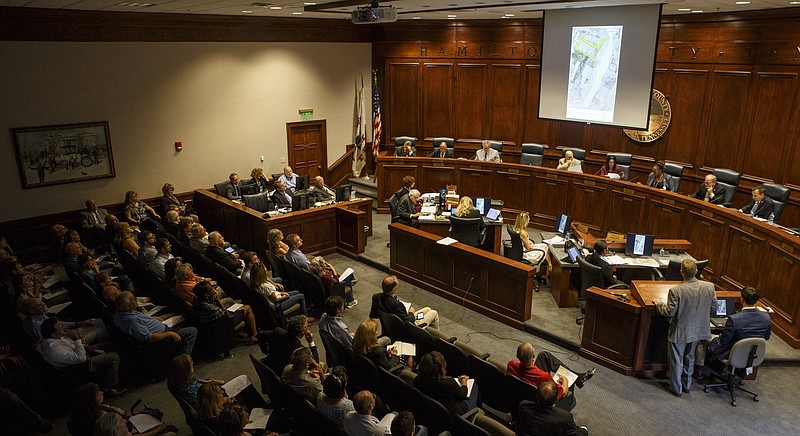Redistricting is not for the faint of heart.
The first meeting of the Hamilton County Commission's decennial process to divvy up Hamilton County into political districts wasn't many minutes old last Wednesday when accusations of bias, racism and favoritism were alleged. And this was before any potential map was put on screens for any and all present or watching online to see.
The most critical point, the three Democratic commissioners said in making their accusations, is that the process must begin with the knowledge that the county is made up of roughly one-third (30.4%) minority residents. Somehow, they allege, those 30.4% are not being represented fairly.
It's unclear, though, how they believe minority residents could be treated more fairly with county residents living where they live and the necessity to shape two districts in ways that would keep minority representation.
The problem is that the two districts with current minority representation, Districts 4 and 5, have minority populations of 71.8% and and 66.8%, respectively. The next closest is District 8 with 35.1% minority representation.
If the commission keeps its current nine-district set-up, it would be practically impossible to carve out a third district that would have more than 50% minority residents.
The commission, as has been suggested and as is being discussed by the redistricting panel, could expand in number to allow an additional minority district, but it's not practical to have an even number of districts in the case of tie votes. So, an 11- or 13-member panel most assuredly would allow for more minority representation but also more white representation.
What the Democratic commissioners also must consider is that they may be able to create more minority districts with an expanded commission, but they cannot determine how their constituents will vote.
Over the last 60 years, Blacks have given Democratic presidential candidates 90% or better of their vote, though that has been declining over the last several elections. The vote of other minorities, Hispanics, Asians, Indian, Islanders, two or more races or other (to use census terms), has not been so monolithic.
In addition, many of those minority groups are spread throughout the county rather than centered in Districts 4 and 5 as more than 28,000 of the county's 48,000-plus Black residents are.
Hispanics, for instance, account for 15.7% of the population in District 4 but make up from 2.5% to 8.7% of the population in all eight other districts. Individuals of two or more races make up no more than 7.9% of the population in one district but no less than 4.6% in the rest.
In other words, creating more minority districts where constituents would certainly vote for Democrats is no guarantee, no matter how many districts the commission creates.
Democrats on the commission also must realize Black residents are more spread out, with the Black population of District 4 dropping 6.8%, District 6 dropping 44.6% and District 7 dropping 16.5% over the past 10 years. Thus, it will be harder to corral in contiguous areas what they hope are near certain voters for their party.
The calls of racism and unfairness are nothing new for the Hamilton County redistricting process, though. In the 2001 redistricting, following the 2000 census, the commission's two Black members threatened to sue because they didn't like the way district lines were drawn. They first appealed to the Hamilton County Election Commission and to the Democratic state attorney general with their concerns but were rebuffed at both turns.
Indeed, then-Commissioner Bill Hullander addressed the same problems we envision today for Democrats who want to fit a square peg in a round hole.
"I really think this is fantastic to come out with this figure [for two minority districts] considering where people are living," he said.
Ten years later, then-Commissioner Joe Graham expressed a similar sentiment after some last-minute changes slightly altered his district lines.
"The way the county is geographically, with the rivers and bridges and minority districts," he said, "there's not a lot of wiggle room for us to go toward where the growth is."
So, the hollow pontificating about unfairness and racism may go on as long as it takes to finish the redistricting process, but unless Democrats magically can move large groups of people, change natural geographic barriers such as the Tennessee River and force people to vote a certain way, their desire to assure more minority representation is not likely to be accomplished.
